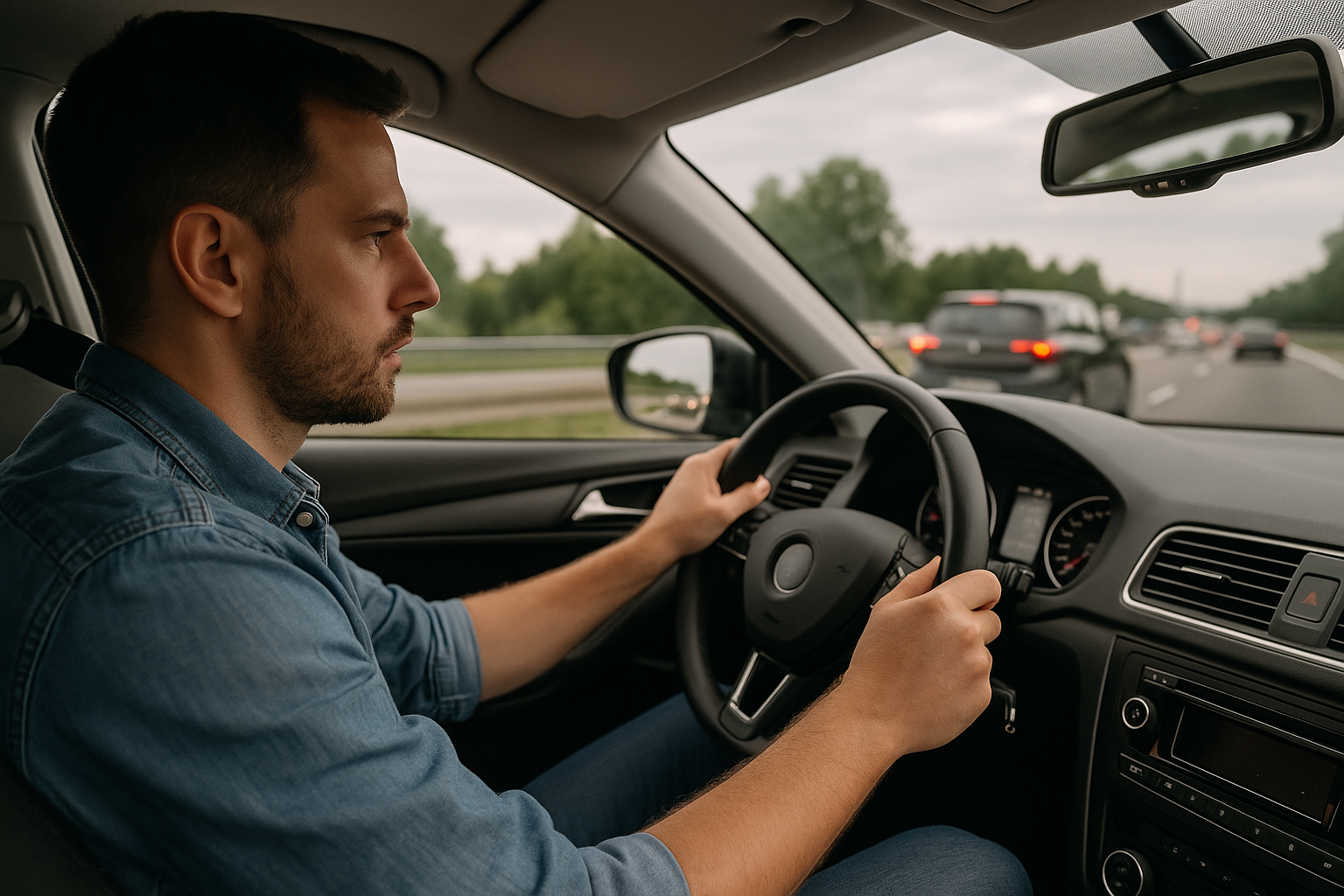Every year, over 40,000 people in the United States die in car crashes. That’s about 115 people every single day, according to the National Safety Council. These deaths aren’t just statistics. They’re loved ones, friends, coworkers.
The worst part? Many of those crashes could have been avoided.
Car accident prevention isn’t complicated. In fact, it often comes down to basic habits of paying attention. Yet too many drivers overlook them or think it won’t happen to them. Until it does.
If you’re behind the wheel, there are simple, clear steps you can take today to dramatically lower your risk of getting into a crash.
And if you ever do find yourself dealing with the aftermath of a wreck, Lowe Law Group is here to help.
Importance of Defensive Driving
Defensive driving is about staying alert, predicting hazards, and reacting early. It’s not a skill. It’s a mindset.
You’re not just driving your own car. You’re also scanning for what others might do wrong.
In 2023, over 22 percent of crashes in Montana involved drivers failing to yield or making sudden moves without checking surroundings. That’s where defensive driving makes the difference.
Keep your head up. Expect mistakes. Be ready to brake or swerve if someone cuts in or misses a stop sign.
It’s not paranoia. It’s how you stay alive.
Avoiding Distracted Driving
Distracted driving is one of the top causes of car accidents in the United States. And it’s not just about texting. Anything that takes your attention away from the road, even for a moment, can be deadly.
According to the National Highway Traffic Safety Administration (NHTSA), 3,308 people were killed in crashes involving distracted drivers in 2022. And that’s just the fatalities. Thousands more were injured in preventable accidents. In states like Utah and Idaho, distraction was a contributing factor in over 10 percent of all reported crashes that year.
Distractions come in three forms:
- Visual (taking your eyes off the road)
- Manual (taking your hands off the wheel)
- Cognitive (taking your mind off driving)
Texting involves all three, which makes it especially dangerous. But it’s not the only risk. Adjusting your music.
Entering an address into your GPS. Eating a sandwich. Talking to passengers. Reaching for something in the back seat. Even daydreaming. All of these can be distractions.
Most distractions feel harmless until they aren’t. A car at 55 mph travels the length of a football field in five seconds. That’s more than enough time to cause a crash.
Keep your attention where it belongs. Driving isn’t a background activity. It demands your full focus, because lives depend on it.
10 Ways to Avoid Car Accidents
1. Put the Phone Away
Texting while driving makes a crash 2 to 8 times more likely to happen. In Utah alone, distracted driving contributed to 3,275 crashes in 2023.
Don’t just silence your phone. Put it out of reach. Use Do Not Disturb. Or let passengers respond to you.
2. Follow the 3-Second Rule
Tailgating cuts your reaction time to almost nothing. To keep a safe following distance, pick a fixed object on the road. Once the car ahead passes it, start counting: one-one-thousand, two-one-thousand, three-one-thousand.
If you reach the object before finishing, you’re too close.
3. Stop Speeding
Speeding is a factor in 29% of all fatal crashes nationwide. In 2022, Idaho recorded over 11,775 speed-related crashes.
You don’t have to crawl. Just match the legal speed limit and adjust if traffic or weather calls for it.
4. Use Your Mirrors and Blind Spots
Before switching lanes, check your mirrors and do a quick head turn. Blind spots can hide motorcycles, compact cars, even entire SUVs.
Add blind-spot mirrors or use built-in monitoring systems. Don’t rely on tech alone.
5. Don’t Drive Drowsy
Being awake for 17 or more hours affects your body like a 0.05 percent blood alcohol level, says the CDC.
If you’re yawning, blinking hard, or forgetting the last few miles, stop. Take a nap or switch drivers.
6. Plan for Weather
Rain reduces traction. Fog cuts visibility. Snow turns roads slick.
Slow down. Increase following distance. Use headlights.
7. Keep Your Vehicle Maintained
Don’t wait for something to break. Bald tires, bad brakes, and worn-out wipers all make accidents more likely.
Check your car monthly. Handle problems early. It saves lives.
8. Never Assume What Others Will Do
A turn signal doesn’t guarantee a turn. A stop sign doesn’t mean someone will stop.
Stay alert. Defensive driving means anticipating errors, not reacting to them after it’s too late.
9. Obey Stop Signs and Red Lights
Intersection crashes are among the deadliest. Red light running killed 1,109 people in 2021.
Always come to a complete stop. Don’t rush yellows. Take the extra few seconds.
10. Watch for Pedestrians and Cyclists
In growing cities like Boise and Coeur d’Alene, more people are walking and biking. That means drivers need to be extra alert.
Always yield at crosswalks. Double-check before turning. Never pass a car stopped at a crosswalk.
Proper Vehicle Maintenance
Mechanical failure causes about 2 percent of crashes in the U.S., according to the Department of Transportation. That might sound small. Until you’re the one whose brakes give out on a mountain curve.
Worn tires, old brake pads, dead headlights, and dirty windshields can all lead to avoidable accidents. In Idaho, state patrols reported over 900 crash incidents in 2022 linked to poor vehicle condition.
A good rule: check your fluids, tires, lights, and wipers monthly. Get regular inspections. Don’t ignore dashboard alerts. Small problems can become big risks fast.
Safe Following Distances
Tailgating doesn’t save time. It only increases the chance of a rear-end crash, which accounts for about 1 out of 3 car accidents.
The three-second rule is your baseline. Choose a fixed object ahead. Wait three seconds after the car in front passes.
Make sure you don’t pass it sooner. If it’s raining or the road is icy, double it.
Following too closely turns every minor slowdown into a potential crash. Back off and give yourself room to react.
Handling Aggressive Drivers
You’ve seen them. Swerving between lanes. Speeding. Honking. Tailgating. Aggressive drivers are unpredictable and dangerous.
In 2021, Utah reported nearly 6,500 aggressive driving-related crashes. Most involved speeding and sudden lane changes.
Don’t engage. Don’t make eye contact. Let them pass.
If someone is threatening your safety, pull over in a public area and call the police. Your ego isn’t worth a crash.
Final Thought
Car accident prevention doesn’t require perfection. Just better habits, sharper awareness, and a bit more patience. These tips won’t just protect your car. They’ll protect your life and the lives of those around you.
If you’re hurt in a crash, especially because of someone else’s negligence, you have legal rights. You don’t have to deal with it alone.
Call Lowe Law Group today to speak with a car accident attorney. We’ll review your case and help you figure out the next step. No pressure. Just answers.








